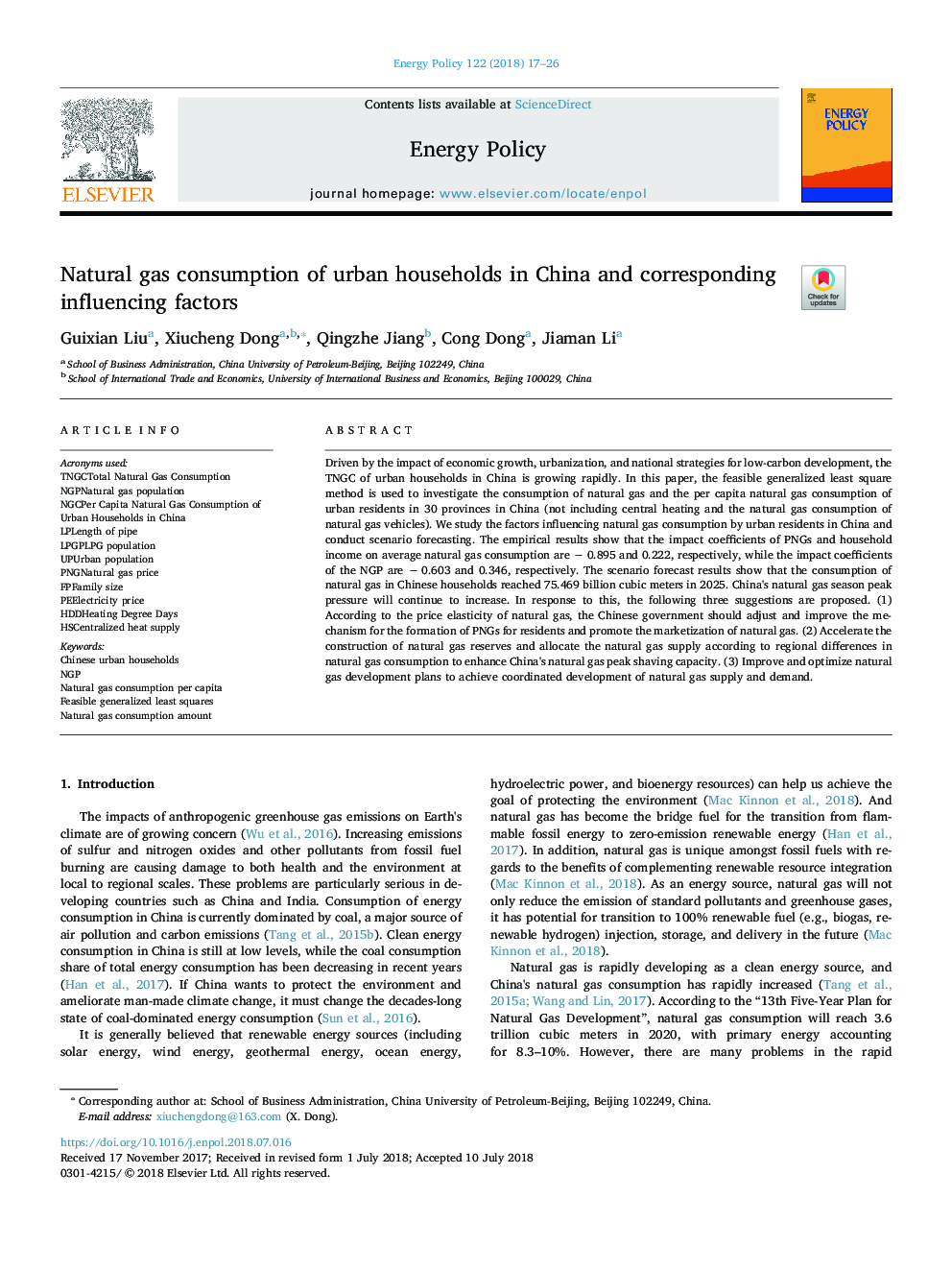| Article ID | Journal | Published Year | Pages | File Type |
|---|---|---|---|---|
| 7396510 | Energy Policy | 2018 | 10 Pages |
Abstract
Driven by the impact of economic growth, urbanization, and national strategies for low-carbon development, the TNGC of urban households in China is growing rapidly. In this paper, the feasible generalized least square method is used to investigate the consumption of natural gas and the per capita natural gas consumption of urban residents in 30 provinces in China (not including central heating and the natural gas consumption of natural gas vehicles). We study the factors influencing natural gas consumption by urban residents in China and conduct scenario forecasting. The empirical results show that the impact coefficients of PNGs and household income on average natural gas consumption are ââ¯0.895 and 0.222, respectively, while the impact coefficients of the NGP are ââ¯0.603 and 0.346, respectively. The scenario forecast results show that the consumption of natural gas in Chinese households reached 75.469 billion cubic meters in 2025. China's natural gas season peak pressure will continue to increase. In response to this, the following three suggestions are proposed. (1) According to the price elasticity of natural gas, the Chinese government should adjust and improve the mechanism for the formation of PNGs for residents and promote the marketization of natural gas. (2) Accelerate the construction of natural gas reserves and allocate the natural gas supply according to regional differences in natural gas consumption to enhance China's natural gas peak shaving capacity. (3) Improve and optimize natural gas development plans to achieve coordinated development of natural gas supply and demand.
Keywords
Related Topics
Physical Sciences and Engineering
Energy
Energy Engineering and Power Technology
Authors
Guixian Liu, Xiucheng Dong, Qingzhe Jiang, Cong Dong, Jiaman Li,
